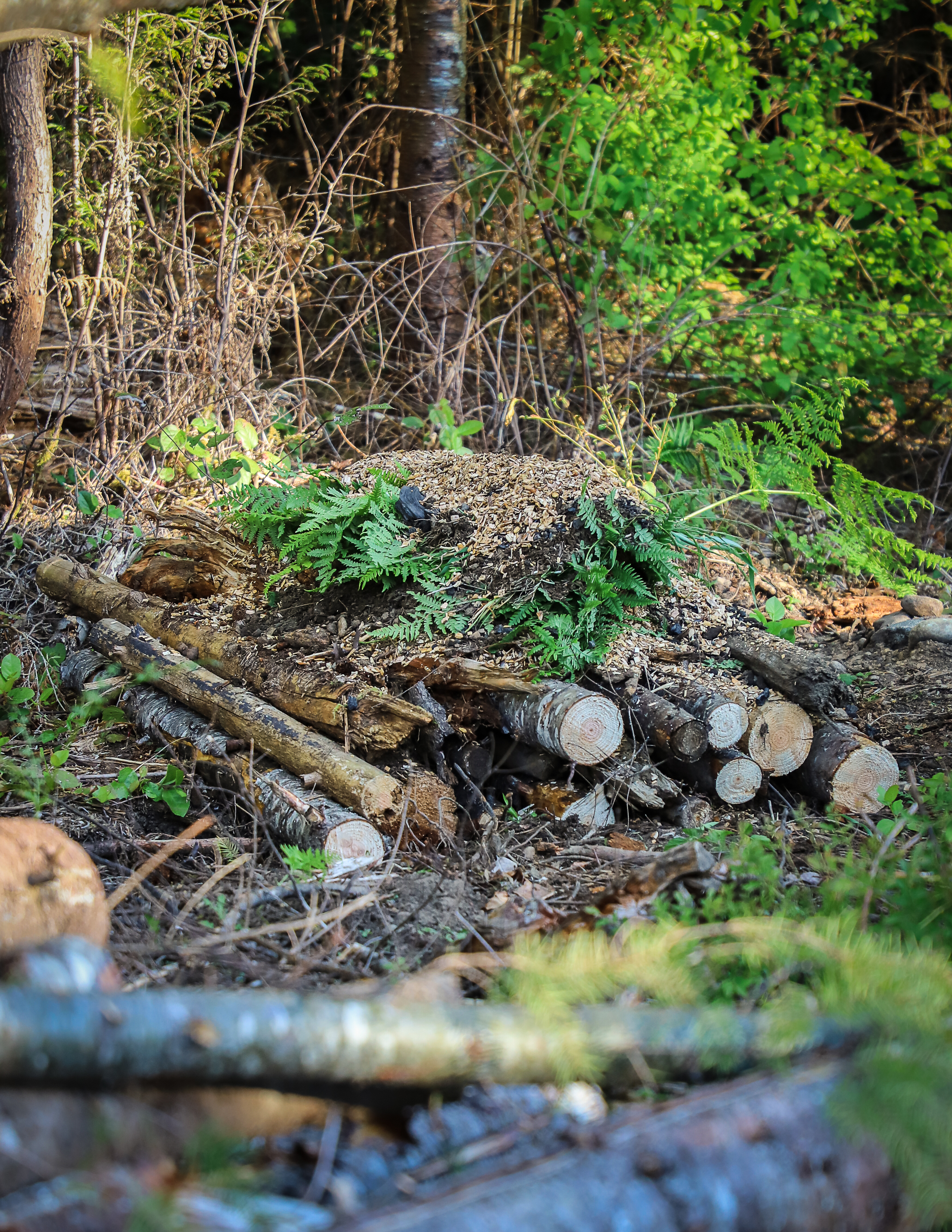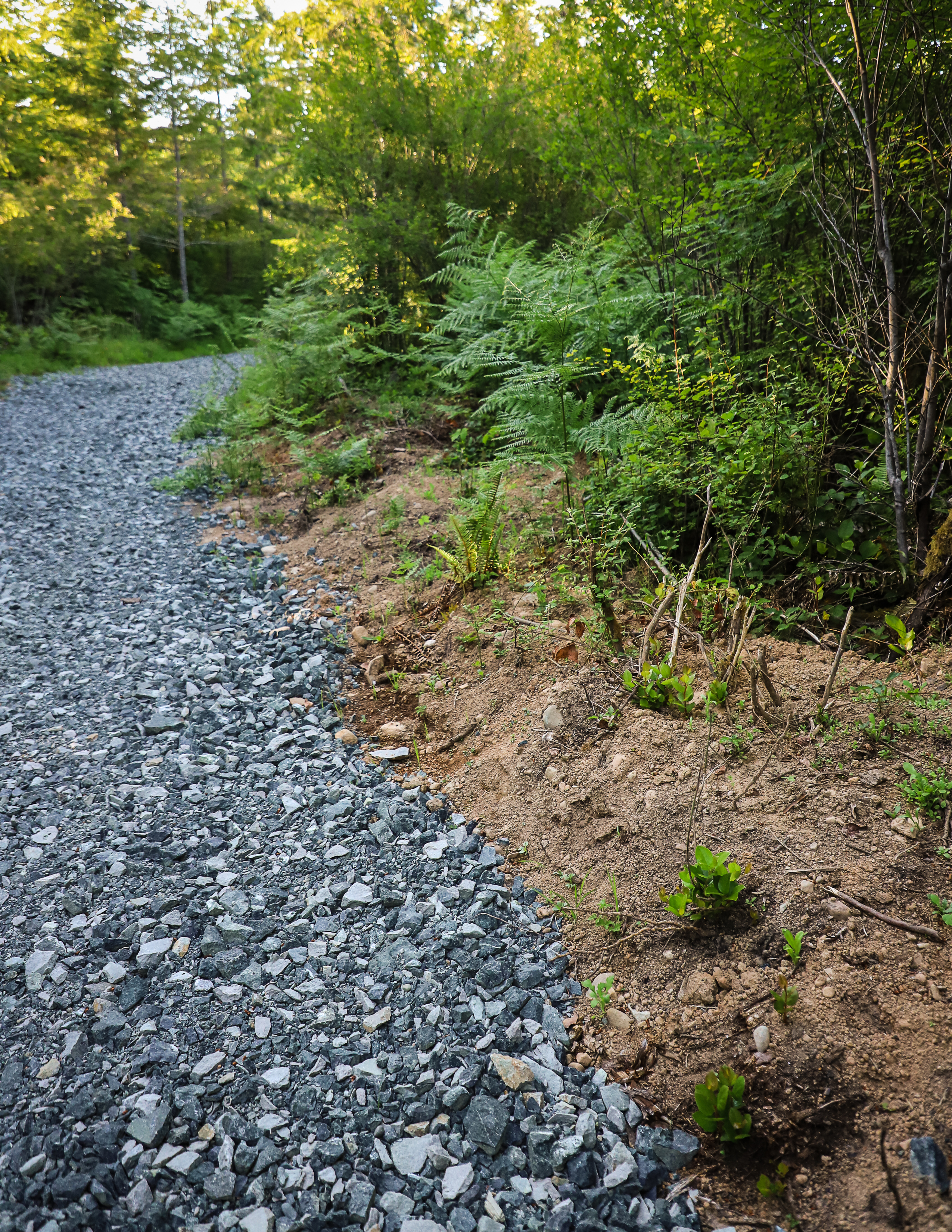Hügelkultur

After buying their dream property in Qualicum, former forester Anna Bellows and her partner Tyler Stephens had to clear some land from the enormous, forested acreage to create a building site. As stewards of the land, it was important to them to utilize the trees in an eco-friendly, and after much research, they settled on hügelkultur. This ingenious style of gardening would utilize the trees that were felled while clearing the area for their orchard and replenish the soil. As Anna wielded her chain saw, eager to build a demo hügelkultur garden, I talked with her about their experience, the process and the benefits of this gardening style—and received tips on how you can do it, too.
The definition
Hügelkultur is a style of raised bed gardening popularized in Germany, though similar ideas have been used for centuries in many countries around the world. The basis of these raised beds is wood, where old trees, branches and wood chips are piled up before being topped with other organics like upturned sod, manure or topsoil. As the wood breaks down, it provides carbon. Green compost added on top of the wood adds nitrogen; together, the wood and compost create a garden that retains water exceptionally well.
The benefits
There are many great reasons to use the hügelkultur method. For Anna, repurposing otherwise scrap wood was important, eliminating the need to truck in soil and dispose of the cut wood. Additionally, they needed to improve the quality of the soil and they wanted to create large raised garden beds that didn’t need watering.
What? That’s right: after the first year, the biomass works well in retaining water during dry summers, enough so that you shouldn’t need to water it at all. During the rainy season, the wood catches most of the nutrients instead of letting them leach out into ground water, and then re-feeds them into the garden throughout the growing season. This style of gardening is very beneficial if you have poor quality soil. The layering of wood, sod and other organic yard waste compost into a garden bed rich in nutrients, mycelium, bacteria and insects.
Anna and Tyler added biochar in the form of burned stumps to their mix to further improve the moisture-retentive properties. While working remote jobs away and living off grid with no watering system, their first big hügelkultur garden remained lush and green all summer. With the success of their first earth mound garden, they expanded to make a whole orchard and numerous vegetable gardens from their excess wood. The orchard bed is so large it seems flat at first glance, but is simply hügelkultur on a larger scale.
The DIY instructions
To do this yourself, start by laying down old logs, sticks, branches or wood chips and charcoal, adding in any dried leaves or rotten hay. Stack them in the shape you want your garden. You can use fresh wood (best if you want to try growing mushrooms), rotting wood or anything in between. Cedar is not top of the list for this project because it takes so long to breakdown and black walnut wood is toxic. Alder, birch, poplar, pine, fir, spruce, and willow are all good choices. Anna lays the larger logs close together and then fill in gaps with smaller branches and wood chips, tamping it all down so it will get to work composting faster.
If you are digging up sod, use it turned upside-down over top of the wood; otherwise, add some dirt next. Top the mound of wood and dirt with green mulch like leaves, grass clippings, pine needles or straw. Finish your hügelkultur recipe with compost or topsoil and some mulch to retain water and then start planting.
Beds can be as high as you’d like, but the ideal height to start with is six feet or more. This height will hold enough moisture to eliminate watering by the second year. That may seem high, but it will shrink by about a foot the first year as things settle. If you want the benefit without such a high garden, you can dig into the ground a foot or two before laying the logs and then topping with the soil you dug out. This will give you a garden that appears three-to-four feet high with the benefit of the six-foot garden. As for length and width, you can make any size bed you like: some people like a three-to-four foot width to easily reach the centre from either side, while others don’t mind walking up it to reach the middle.

The fine print
Fresh wood has a lot of carbon and tends to suck the nitrogen from the soil the first year, so you may need to add amendments or plant some peas or beans in it to help keep the nitrogen up. As the wood breaks down, it will mellow and start to give nitrogen back to the garden. Easy ways to add nitrogen include using sod, grass clippings, coffee grounds or manure.
Some say hügelkultur is best started in the fall and planted with some nitrogen-rich cover crop that can later be mulched in and ready for planting in the spring. Others say build it any time of year, because it is a long game—and the sooner you get it built, the sooner it will start working for you.
As Anna plans more beds and Tyler sources unique and rare fruit trees, the food and flowers in their eco-friendly earthen mound gardens are happily growing without worrying about drought conditions in the summer. For anyone with a large space and wood or trees to use, this might be the best garden style for you too!




